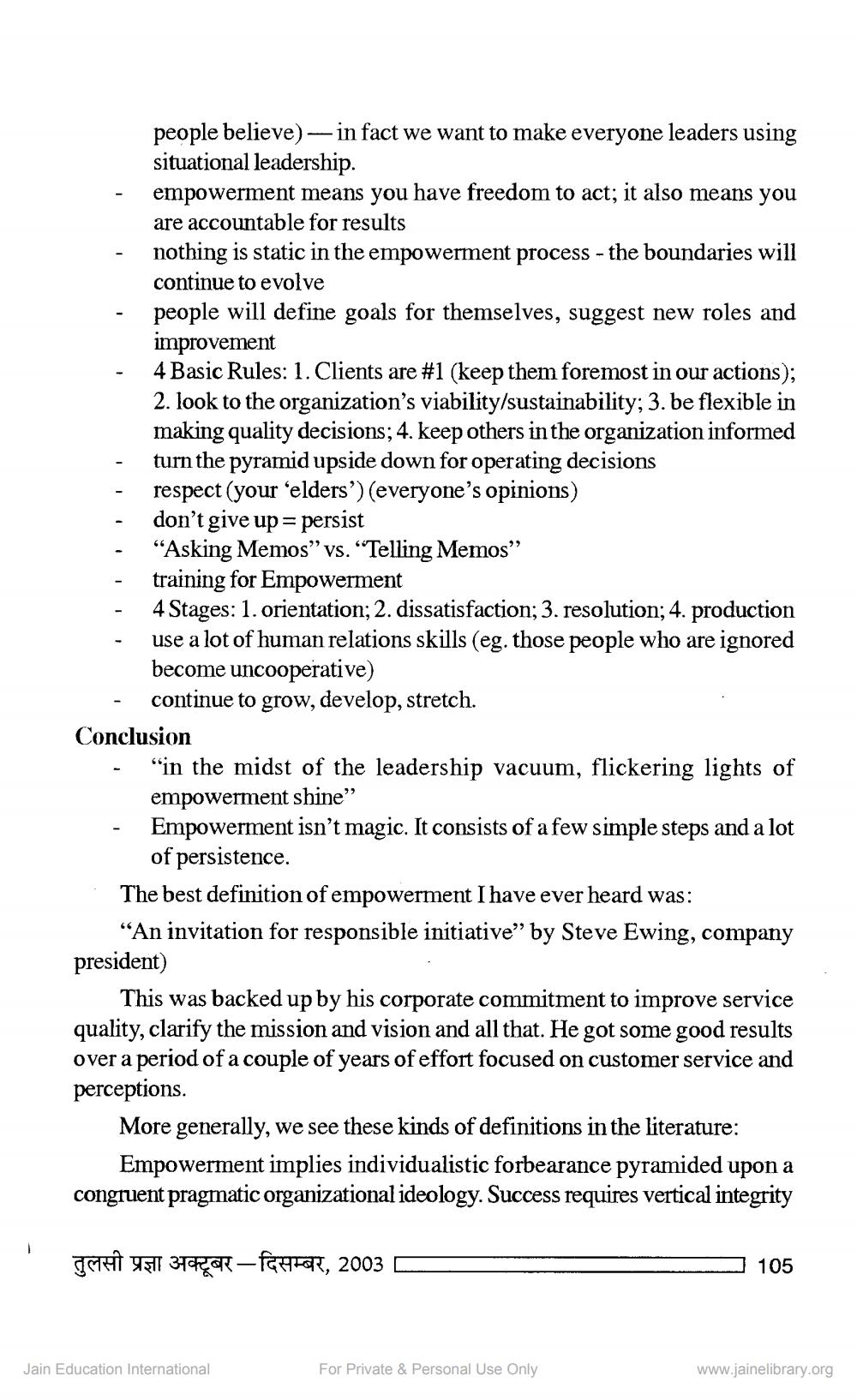________________ people believe) -- in fact we want to make everyone leaders using situational leadership. empowerment means you have freedom to act; it also means you are accountable for results - nothing is static in the empowerment process - the boundaries will continue to evolve people will define goals for themselves, suggest new roles and improvement 4 Basic Rules: 1. Clients are #1 (keep them foremost in our actions); 2. look to the organization's viability/sustainability; 3. be flexible in making quality decisions; 4. keep others in the organization informed turn the pyramid upside down for operating decisions respect (your 'elders') (everyone's opinions) don't give up= persist - "Asking Memos" vs. "Telling Memos" - training for Empowerment 4 Stages: 1. orientation; 2. dissatisfaction; 3. resolution; 4. production use a lot of human relations skills (eg. those people who are ignored become uncooperative) - continue to grow, develop, stretch. Conclusion - "in the midst of the leadership vacuum, flickering lights of empowerment shine" - Empowerment isn't magic. It consists of a few simple steps and a lot of persistence. The best definition of empowerment I have ever heard was: "An invitation for responsible initiative" by Steve Ewing, company president) This was backed up by his corporate commitment to improve service quality, clarify the mission and vision and all that. He got some good results over a period of a couple of years of effort focused on customer service and perceptions. More generally, we see these kinds of definitions in the literature: Empowerment implies individualistic forbearance pyramided upon a congruent pragmatic organizational ideology. Success requires vertical integrity TAE 951 37402-FGHFORT, 2003 105 Jain Education International For Private & Personal Use Only www.jainelibrary.org




